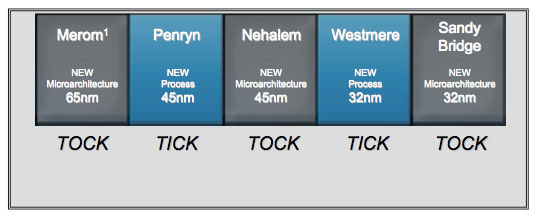Final Words
The more I think about it, the more I'm confident that the Core i7 continues to fuel Intel's beacon of performance, although admittedly the biggest gains are in well threaded workloads (I will be working on a Hyper Threading/multi-tasking set of tests next). It's not worth the upgrade for most existing Core 2 Quad owners unless you do a lot of video encoding, video editing or 3D rendering, but going forward it looks very likely to continue Intel's performance lead even as AMD brings up its 45nm Phenom processors.
Take power efficiency into account however and then Nehalem gets more interesting to more people. Right now we're only talking about 130W TDP parts, which means that the power efficiency really only applies to someone looking to replace a QX9770. Going forward, when Intel can deliver a 95W, 65W or even lower TDP based on the Nehalem then there may be a compelling power efficiency story. A 10 - 20% decrease in power consumption, at the same manufacturing process, is nothing to scoff at. Then a year from now we get the same architecture built on 32nm, which will hopefully give us an even further reduction in power consumption. It's weird to say, but Nehalem may end up being an incredibly good architecture for notebooks. Keep that in mind before buying those new MacBooks guys.
The power efficiency story gets even more exciting when you realize that these gains come with no change in manufacturing process. Pardon the pun, but the next tick is going to be a cool one.

The overclocking story with Core i7 isn't as complex as it sounded at first, fundamentally you can still clock this thing the way you did the Core 2s before it. Turbo mode and the TDP/current limitations do add some complexities, but with the flip of a BIOS switch they go away if you don't wish to bother with them. Change can be scary, but in this case there's no reason to be worried.
The Core i7 appears to be just as smooth of an overclocker as the Core 2s before it. Increase the BCLK and off you go, free performance from Intel and its wonderful fabs.
The split between the core and the uncore in terms of clock speed and overclocking potential doesn't appear to be that big of a deal either. The uncore runs slower on the lower end chips, but increasing its clock speed doesn't really do all that much for performance. There's a reason Intel kept the uncore running slower than the core and it doesn't look like there's much real world benefit in pushing it much higher.
With Nehalem Intel implemented a lot of changes simultaneously. We got Hyper Threading, a completely static CMOS design, new power gate transistors, QPI, an integrated memory controller and some other lower level architectural tweaks. It's a lot to digest, but we're getting there. To Intel: deliver us some 95W and 65W TDP Nehalem and you'll win the hearts of the current Q6600/Q9300/Q9450 owners.
And I can't wait to see one of these things in a notebook, mobile Nehalem could be the most exciting Centrino launch since Merom...










23 Comments
View All Comments
npp - Friday, November 7, 2008 - link
"Intel has done nothing to limit overclocking with the Core i7" :)There was such a huge anti-campaign going on everywhere towards Core i7 overclocking that it seems almost funny to hear that now. I just couldn't imagine how on earth Intel would ditch one of the sweetest things in the geek world just for fun... They weren't so stupid, fortunately.
I would be very interested in some idle/full load temps, particulary for the junior model, at stock speeds and overclocked to some reasonable 24/7 level. It's interesting to see how much they differ from temps we're used to see right now with the good old Core 2 Duos/Quads.
Mclendo06 - Friday, November 7, 2008 - link
Does anyone know what the contact pads on the top edges of the processor are for? I've wondered this for a while but a quick google search only yielded questions. Also, Anand, thanks for the great coverage.Clauzii - Saturday, November 8, 2008 - link
Good question. Probably used for final testing/burn in.